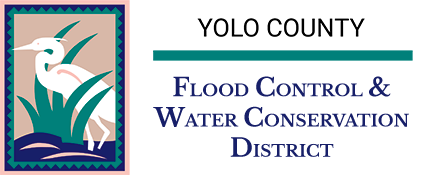Construction of Indian Valley Dam was completed in 1974, and water releases commenced the following year, which provided an additional source of surface water for the growers of western Yolo County. The dam created Indian Valley Reservoir, a six-mile long, one-mile-wide reservoir with a maximum capacity of 300,600 acre-feet of water. The District holds permits from the State of California which allows the District to use water impounded from the North Fork of Cache Creek for approved beneficial uses. The primary beneficial use of Indian Valley water is for irrigation, and that use drives most water management decisions. Stored water is released from the reservoir to fulfill farmers’ irrigation orders; other secondary beneficial uses such as hydroelectric power production or for recreation such as rafting are created when water is released for irrigation.
Indian Valley Reservoir has another important benefit for District water customers compared to water from Clear Lake in that water stored at Indian Valley can be carried over from one year to the next. Whereas the water allocation from Clear Lake is forfeited if it is not used during the irrigation season, stored water in Indian Valley remains under District control. This is particularly beneficial during California’s boom-or-bust rainfall patterns when a particularly wet year is followed by a very dry one.
Indian Valley Dam and Flood Control
One of the purposes of Indian Valley Dam is to provide flood control for Cache Creek. The concept of using a dam as flood control works by briefly storing storm water so it can be released in a more controlled manner. The watershed area above a dam, in this case, the upper North Fork Cache Creek is controlled, because water flows and is stored in the reservoir. The area below the dam is uncontrolled because rainwater sheds into the creek without a storage facility to regulate it. Projects such as Indian Valley Reservoir maintain a certain amount of capacity to temporarily store stormwaters so it can be released in a controlled fashion after the rains and not contribute to downstream flooding.
The U.S. Army Corps of Engineers (USACE) develops a flood curve based on studies of the historical amount, timing, and form (rain or snow) of precipitation, the capacity of the reservoir, and other factors such as the capacity of the dam outlet works. Each reservoir has a specific flood curve based on those factors; and for Indian Valley, 40,000 acre-feet of storage capacity must be maintained from October 15th to March 15th. If the amount water in the reservoir exceeds the allowed storage during this time, it must be released in a controlled manner as soon as it is safe to do so without increasing downstream flooding. The District may slightly delay the release of water if downstream conditions make it unsafe for immediate release, but maintaining the ability to safely operate the dam is of paramount importance. Water releases to maintain the flood pool capacity are called flood releases, and they are made with communication to a variety of agencies involved in flood protection including the USACE, the National Weather Service, and the California Department of Water Resources.
